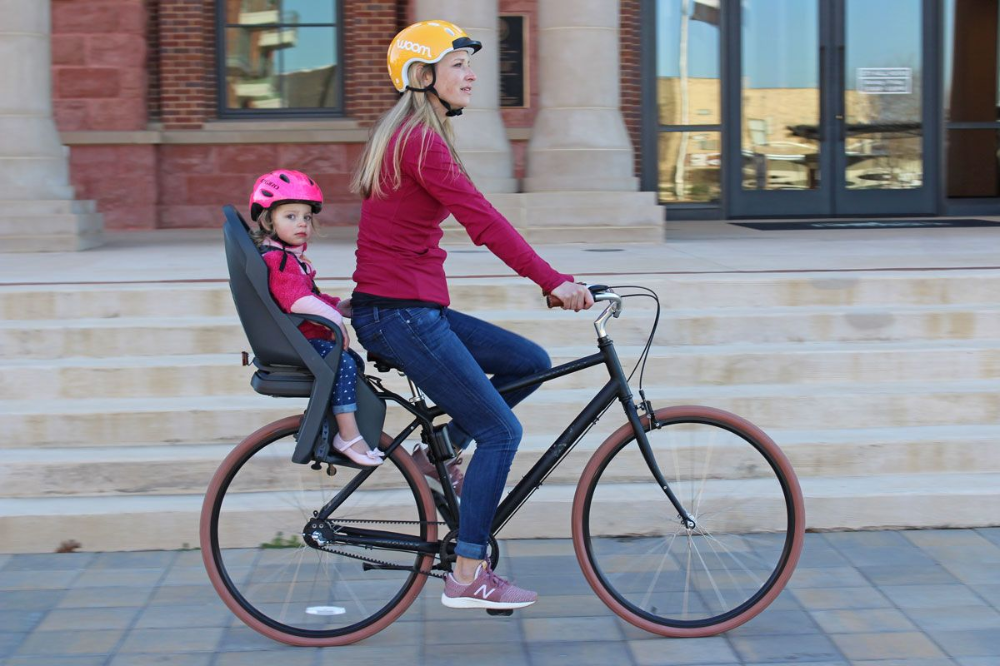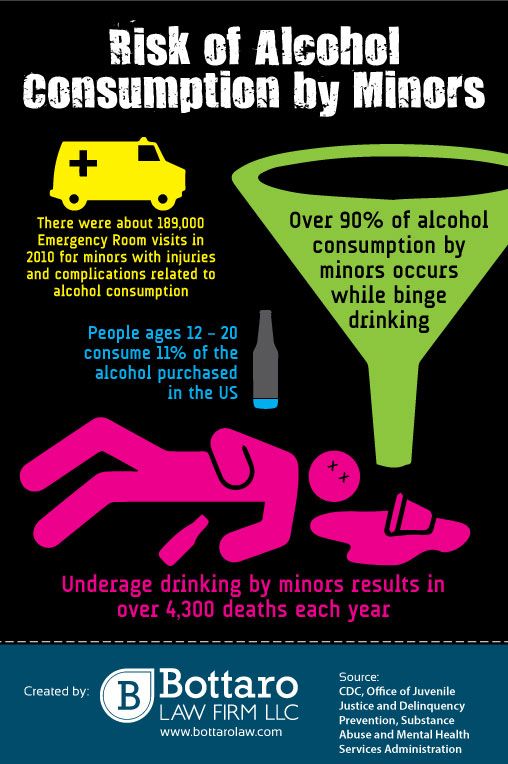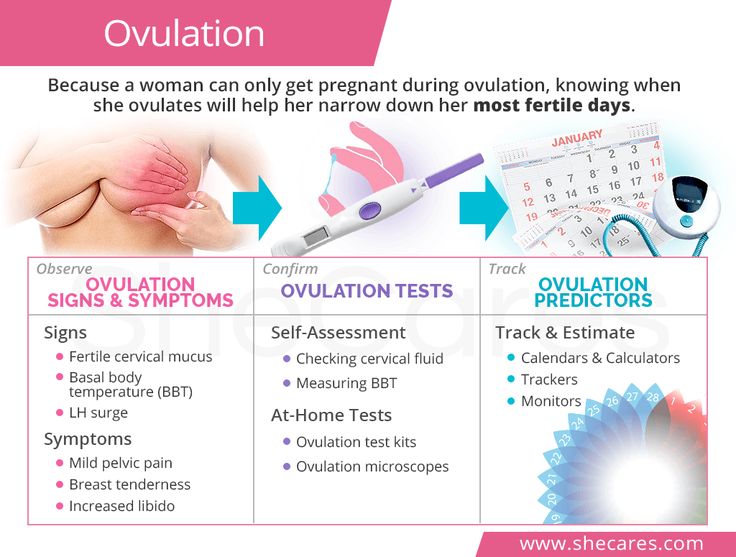How old can a child seat in front
When Can Kids Sit in the Front Seat
Age 13. Bam. Done!
The child in the photo below is too young to sit in the front seat. He would be safer to be in a booster seat in the back seat of the car. It is safest — and best practice — for children to not sit in the front seat until they are 13 years old.
The Centers for Disease Control, the National Highway Traffic Safety Administration and, most likely, even your air bag and car manufacturer recommend keeping children under age 13 in the back seat.
I say “most likely” your car manufacturer because I haven’t personally checked the passenger visors in every car to see if they ALL have a warning label like those shown here.
Not everyone follows this recommendation
We notice a lot of children who are obviously not 13 sitting in the front seat. This is especially noticeable during our elementary school drop off and pick up.
When the child is so short you can just see the top of his head over the dash in the front seat, not only should he still be in the back seat but he should also in a seat belt positioner.
We get it. It’s hard. Even though we told our 11-year-old he’ll need to wait until 13, he still asks to sit up front. And I know some of his friend’s parents allow their children to sit in the front. Most of his friends are allowed to.
As a matter of fact, nine out of 10 parents allow their children to use the vehicle seat belt before they can properly pass the 5-step seat belt fit test. So it’s no surprise they also allow their child to sit in the front seat before the recommended age of 13.
And while some states do have laws which require children to sit in the back seat, most do not. Of those that do, many only go up to age 8.
Which states have laws about when can children sit in the front seat?
California, Georgia, Hawaii, New Jersey, Rhode Island and Tennessee laws require children to be in the rear seat properly restrained until age 8.
Delaware law doesn’t allow children to sit in the front seat until they are 12 years old or 65″ tall.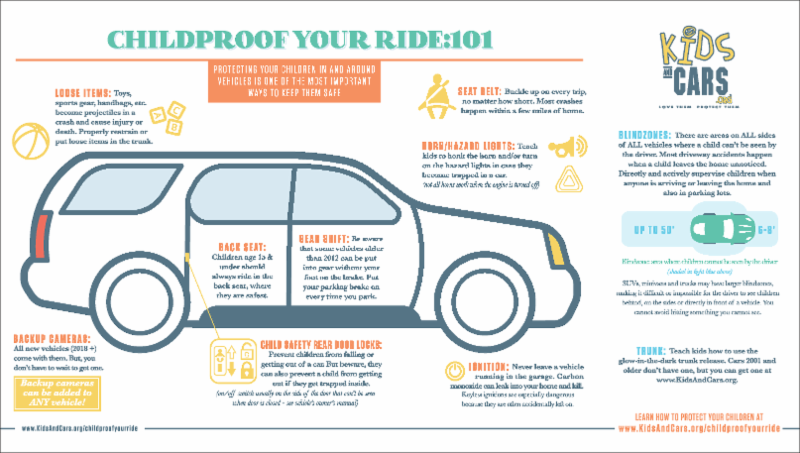
Maine law doesn’t allow children to sit in the front seat until the child is age 12 or 100 pounds.
Washington law doesn’t allow children to sit in the front seat of the car until age 13.
Puerto Rico law requires children to remain in the back seat of the car until age 12.
(We now have this bit of info included in our list of state car seat laws.)
Once again occupant restraint laws are commonly the minimum standard to follow as they are typically a compromise between “best practice” and what lawmakers think their constituents will tolerate.
Why is it important to follow the recommendation?
We often hear, “but I sat up front and I’m fine.” That’s true. Most of us adults did sit in the front seat when we were children. Some of us adults sat in all kinds of places that would be considered compromising to our safety these days. For instance, because of lack of seating, I often was squished into the hatchback of my mom’s Mazda RX-7 while my brother, only 2 years older, was in the front seat.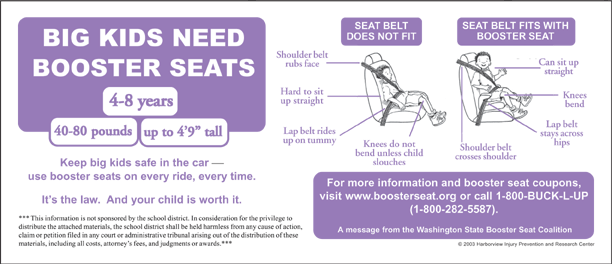 And Greg often shared the cargo space of their station wagon with one of his 8 siblings.
And Greg often shared the cargo space of their station wagon with one of his 8 siblings.
A lot of things have changed since then such as the number of cars on the road, the speed at which they travel, an increase in miles driven per family and increase availability of passenger air bags. Most importantly what has changed is our knowledge of crash dynamics and occupant safety.
3 reasons to wait for a child to sit in the front seat
1. Location, location, location. The back seat is the safest place for your children — actually safer for everyone regardless of age, height or weight — because most crashes occur in the front of the car and the back seat is farthest from this impact. So in general there is a lower risk of injury for back seat passengers.
2. Air bags are designed for a 140-pound man wearing a seat belt. (I know fellow women under 140 pounds, we don’t fit the ideal range either, kind of like seat belts are not designed for women — much less pregnant women. But what are car manufacturers to do? They have to use some average.)
But what are car manufacturers to do? They have to use some average.)
Airbags are not designed for children who are much lighter and smaller. As such airbags can cause serious injury to children below the height requirement by hitting them in the face, chest, neck or head at speeds of between 90 to 210 miles per hour.
Nationwide, more than 100 children have been killed by air bags in recent years. And many of these deaths were in slow-speed collisions that should have been minor.
Download our cheat sheet to learn the 4+ stages of car seats and which one your child is in.
Also older children are more likely to have the maturity to stay sitting properly and keep their body out of the deployment zone of the airbag. When properly seated and wearing their seat belts, teens are generally big enough for the air bag to be of some benefit.
3. Bone development. Kids may be as big as adults on the outside but their skeletal system is still developing.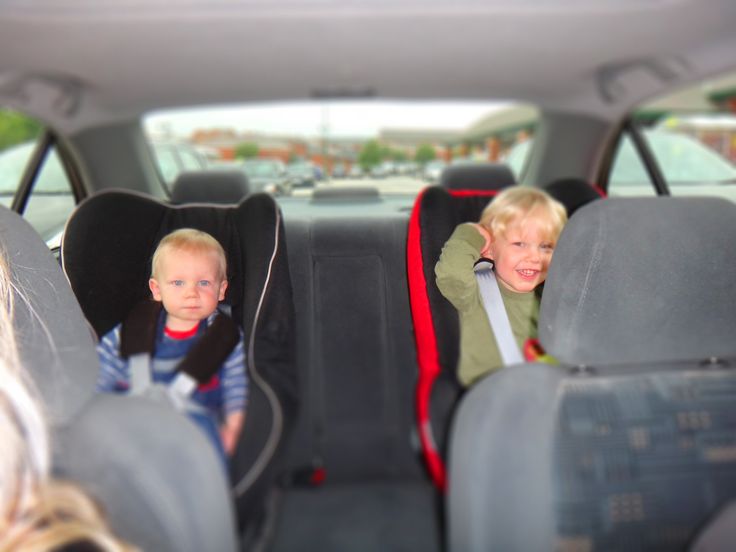 Bones develop strength with age, not size.
Bones develop strength with age, not size.
According to a study in Paediatr Child Health, children who are 12 years old or younger have iliac crests that are less developed than those of adults. (The iliac crest is the part of the hip bone which keeps the seat belt properly positioned on the hips.) This can allow the seat belt to ride up over the abdomen, causing seat belt syndrome.
Children do not have fully developed breast bones or sternum, yet. While this may not fully develop until a few years later, waiting until at least 13 gives it more time to get stronger. Without a mature skeletal system, a child in at increased risk of injury, especially if the child is also in the deployment zone of an airbag.
Are there any exceptions to the rule?
Generally speaking you can have a child sit in the front seat if all the rear seats are occupied by other children. For example — and much to my dismay — Grandma’s car only has two seat belts in the back seat so my 11-year-old gets to set up front when she drives all 3 of our children.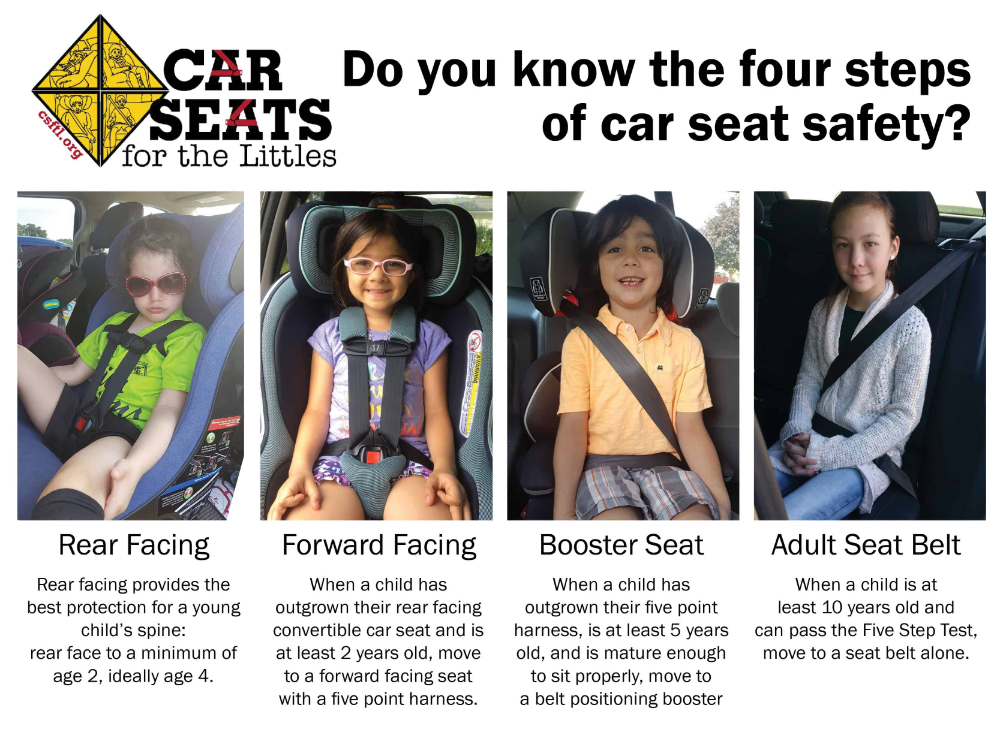 He, of course, is super happy about this. Luckily he 5-stepped some time ago and is mere inches from my height.
He, of course, is super happy about this. Luckily he 5-stepped some time ago and is mere inches from my height.
Other exceptions may be if your car has no back seat or if your back seat has lap-only belts and no shoulder restraints and your child rides in a booster, he’s safer in the front seat properly secured in a booster than in the back not in a booster.
If you do end up with a child in the front seat, turn the airbag off or take it to the dealership to have them disable it. Some vehicles have “smart” airbags which can detect the weight in the front seat and automatically turn off if the weight is low enough to not trigger it. Also push the front seat back as far as possible, especially if you cannot turn off the airbag.
In the end, you are the parent. You can make the choice to tell your child safety trumps their being “cool”.
By Amie Durocher, Creative Director at Safe Ride 4 Kids and certified CPS Tech since 2004
Copyright 2021 Safe Ride 4 Kids. All rights reserved. You may not publish, broadcast, rewrite or redistribute this material without permission. You are welcome to link to Safe Ride 4 Kids or share on social media.
All rights reserved. You may not publish, broadcast, rewrite or redistribute this material without permission. You are welcome to link to Safe Ride 4 Kids or share on social media.
We originally published this post in August 2017. We updated the article for accuracy and comprehensiveness.
© belchonock | depositphotos
© amie durocher
Booster Seat Requirements | Booster Seat Age
Posted on in Car Seat Safety, Greg's Safety Videos by Greg Durocher
Get to know the 5-step seat belt fit test prior to moving your child out of a RideSafer or traditional booster seat.
We are with our oldest son, Mason (10 years old), who is going to help us share with you the 5-step seat belt fit test.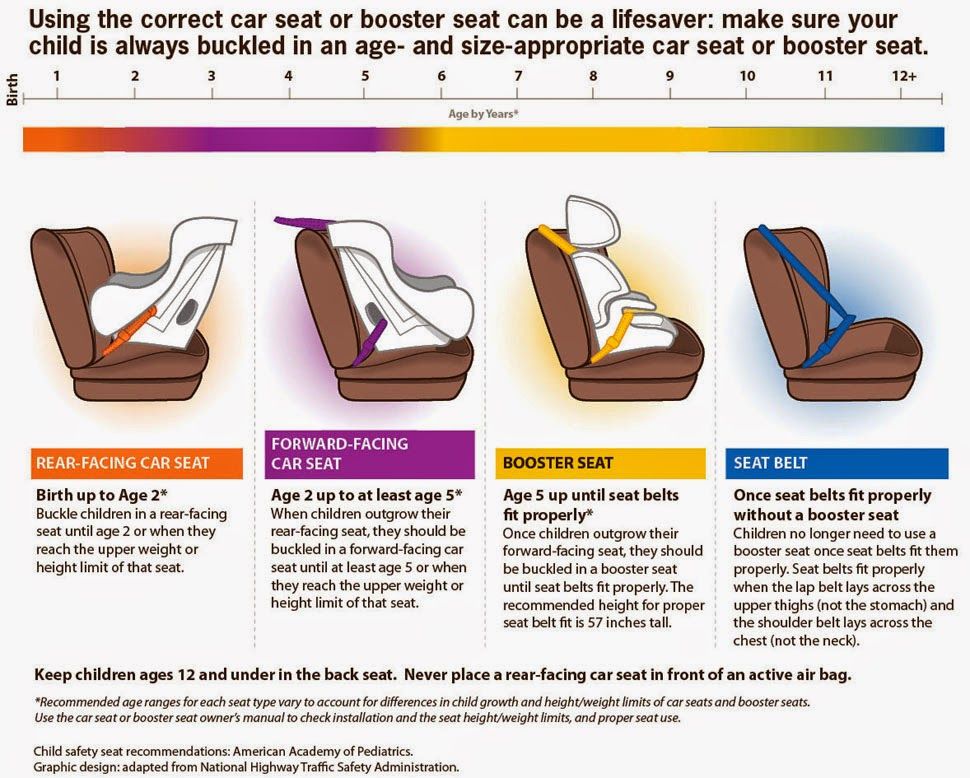 The 5-step test is how you as a parent or caregiver can determine when you can switch your child from a booster seat to a seat belt.
The 5-step test is how you as a parent or caregiver can determine when you can switch your child from a booster seat to a seat belt.
- Does the shoulder portion of the seat belt lay mid chest, mid shoulder?
- Is the child able to sit with his bottom all the way to the seat back
- Does the child’s knees bend at the edge of the seat with their feet on the floor?
- Is the lap portion of the seat belt across the child’s upper thighs and hips?
- Can the child stay in this position for the whole trip?
Can your child safely 5 step? If you answered no to any one of these questions, then your child still needs a belt-positioning device like a booster seat or a RideSafer travel vest.
Download our report: Common Car Seat Mistakes and How to Fix Them
If not now then when?
When a child can pass the 5-step seat belt fit test depends on the child’s height. This can vary from car to car. They may be able to pass the 5-step test in one car and not in another. Or even in one seating position in a car but not another. Usually by the time they are 4’9″ (or 57″) they can fit properly in most vehicle’s seat belts.
Or even in one seating position in a car but not another. Usually by the time they are 4’9″ (or 57″) they can fit properly in most vehicle’s seat belts.
Please understand that while the law in your state may allow for a child to ride with just the seat belt at a certain age (to learn what the car seat law is where you live, click on your state on this map) your child may not properly fit the seat belt at that age. Many children do not reach 4’9″ until they are maybe 10 or even 12 years old or older.
So why aren’t short adults required to use a booster seat? Short adults may be at higher risk of sustaining seat belt injuries than taller adults. However, their skeletal structure is more developed and stronger than a child’s.
It is best practice to wait until the child can pass the 5-step seat belt fit test because an ill-fitting adult seat belt can actually cause injury rather than prevent it in the event of a crash. You can read here about seat-belt syndrome, a common injury when the lap belt is resting on a child’s stomach instead of the child’s thighs and hips which it is likely to do without a belt positioner like a booster seat or a RideSafer vest.
By Greg Durocher, CEO at Safe Ride 4 Kids and certified CPS Technician Instructor since 2002
Copyright 2019 Safe Ride 4 Kids. All rights reserved. You may not publish, broadcast, rewrite or redistribute this material without permission. You are welcome to link to Safe Ride 4 Kids or share on social media.
We originally published this post in July 2016. We updated the article for accuracy and comprehensiveness.
© amie durocher
TAGS: 5 step seat belt test, big kids need boosters, booster seat recommendations, booster seats, seat belt ready, Seat belt syndromeAt what age can a child be transported in the front seat?
At what age can a child be transported in the front seat?
Many, even experienced drivers, cannot give an exact answer as to whether children are allowed to be transported in a vehicle in the front passenger seat. In this article, we will consider the rules for transporting children in the front seat in accordance with traffic rules.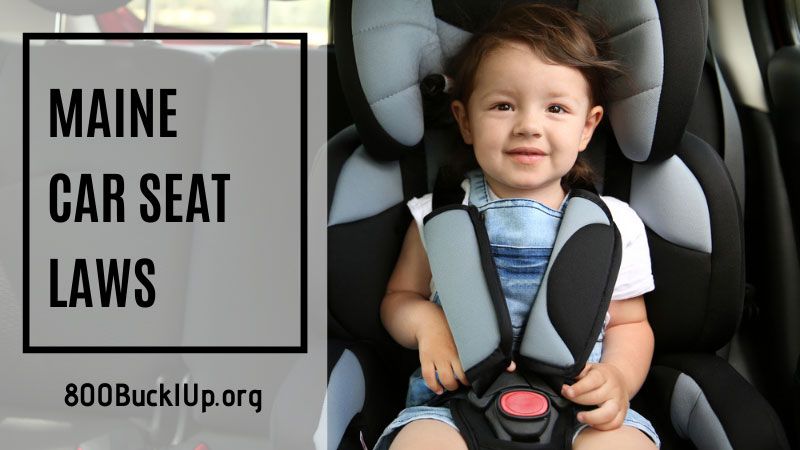 Is it even possible to transport a child in the front seat of a car?
Is it even possible to transport a child in the front seat of a car?
Contrary to the opinion of most motorists who believe that children are only allowed to be transported in the back seat, the SDA states that children are allowed to be transported both in the back and in the front seat. Only the transportation rules themselves depend on the age of the child. The SDA does not provide for a minimum age from which it is allowed to carry children in the front seat, however, if the child is under 12 years old, then a special child car seat is required. Thus, in legal terms, children can be transported in the front seat from the moment they are born. nine0007
For better understanding, we will conditionally divide children into two groups - from birth to 3 years old, and children over 3 years old. What are the differences in their transportation? Let's figure it out.
See catalog of group 0+ seats
Children from birth are transported in group 0+ car seats. The installation of a seat of this group on the front seat is carried out only against the direction of travel, fastening is carried out with a regular car seat belt. When transporting newborns in an infant carrier in the front seat mandatory the passenger airbag must be deactivated. This is explained quite simply - in an emergency, when the airbag is triggered, the chair can be thrown towards the passenger compartment and damage the child who is in it.
The installation of a seat of this group on the front seat is carried out only against the direction of travel, fastening is carried out with a regular car seat belt. When transporting newborns in an infant carrier in the front seat mandatory the passenger airbag must be deactivated. This is explained quite simply - in an emergency, when the airbag is triggered, the chair can be thrown towards the passenger compartment and damage the child who is in it.
The second variation of the infant car seat is Group 1, for children from 9 months to 4 years of age. In this case, there are two variations - movement against the course and along the course of the car. As long as the child moves against the direction of travel, the same rules apply as for group 0+, and when the child sits down already in the direction of travel, the airbag can no longer be turned off. One of the best group 1 seats to use in the front seat - Britax-Roemer King II .
Well, in conclusion, let's consider the possibility of installing a car seat for children over 3 years old on the front seat, this is group 2/3.
See the catalog of group 2/3 seats
In the older group 2/3, transporting children in the front seat of a car is quite simple. The child car seat is installed in the direction of travel, and together with the child, it is held by the standard car belt. There is no need to deactivate the passenger airbag during this transportation. nine0007
As a result, we can conclude that, if necessary, you can transport your child in the front seat of the car, right from his birth. But, for this, a number of conditions must be observed - your seat must be suitable for such transportation, and when installing the seat against the direction of the vehicle, the passenger airbag must be turned off.
Safe travels!
Carrying a child face or back?
Many parents ask question » … at what age should a child be transported facing forward? « , « ... our baby no longer wants to ride with his back, pick up a chair so that he can look out the window while sitting facing forward ", etc.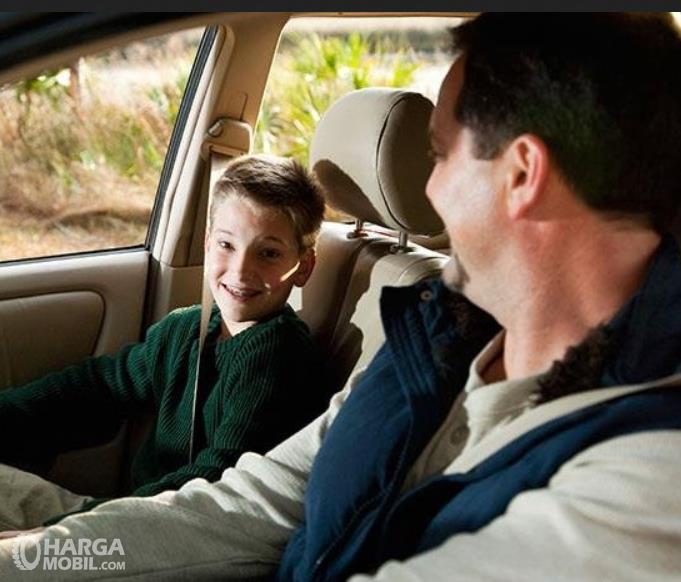
Let's figure out which car seat and how to transport a child, face or back?
The most vulnerable age of a child.
Children aged up to 2-3 years , are the most vulnerable group . The child already runs well, jumps, but the muscles, bones and cartilaginous joints of the child are still fragile, not like those of a teenager or an adult, and in fact, situations sometimes occur on the road in which the load on the child's body can exceed the permissible limits. nine0007
In the event of an accident, the risk of death or serious injury in children under the age of 2-3 years REDUCED by 5!!! times (accident statistics involving children), IF he is in a car seat backwards (of course, if the car seat allows the child to be transported backwards).
Statistical analysis showed that forward-facing children were significantly more likely to be seriously injured.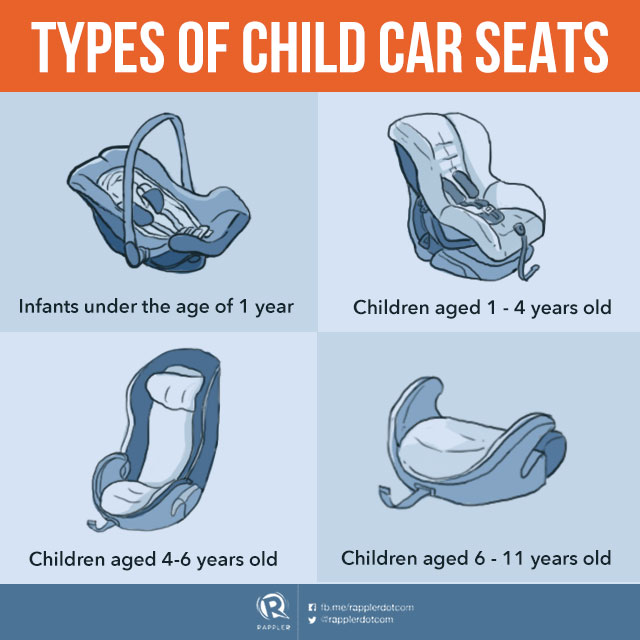
So why is it safer to carry a child
<< backwards >>? nine0005So why is it safer to travel backwards and why Sweden, which is famous for its safe cars, allows children under 3 years old to travel backwards.
The first - according to the figures of all the same statistics, in car accidents there are the most frontal (frontal) collisions. They are very difficult for passengers (especially for small passengers) because the resulting speeds (with them and G ) in this case are maximum . nine0007
Second - children (especially those under 3 years old) are much more fragile than an adult (which we wrote about a little earlier). And the head of a child relative to the body is much heavier than that of an adult, and therefore it is almost impossible to hold the head with weak muscles!
The picture shows two options:
A - child in a car seat facing in the direction of travel,
B - with his back in the direction of travel.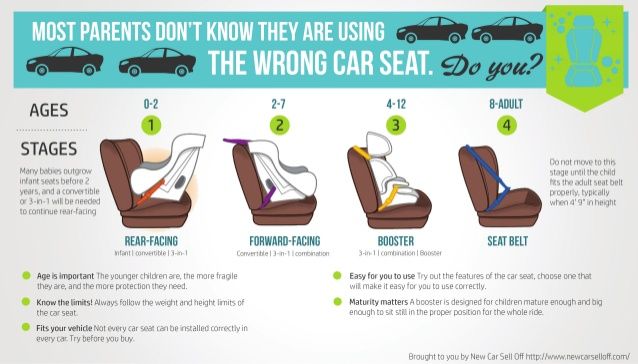
When the baby is in a forward facing child car seat, there is no restraint on the head ( A ) .
In a frontal collision , the head jerks sharply and strongly forward by inertia (if the blow is strong, the head may hit the child's chest, knees) and throws it back with force.
In this case, the main load will be on the child's neck and spine. At a resulting speed of 75-80 km/h, a force equivalent to 300-320 kg acts on the child's cervical region!!! nine0004 Due to the fact that the vertebrae, muscles, cartilaginous joints are not so well developed, they are not able to withstand such a load, and the main destructive force affects the spinal cord, which remains unprotected.
Crash tests carried out have clearly shown that the neck of child dummies is extended by more than 5 cm ! The spinal cord can withstand no more than 5 mm . It is probably not necessary to explain the conclusions in real life. ..
..
Quote from a medical source: "At autopsy, samples of the vertebrae and ligaments of infants can withstand a stretch of up to 5 cm, but the brain tissue itself ruptures if it is stretched a little more than 0.5 cm."
In addition, a force equivalent to 90-96 kg acts on the child's chest, locally, under the car seat belts. The soft sternum and ribs cannot protect vital organs such as the heart and spleen from damage.
When the baby is in the child seat backwards ( B )
It is safer to carry a child in a car seat backwards. during a frontal collision, by inertia continues to move in the direction, forward and strongly pressed into the back of the car seat. With this position of the child in the car seat, the load is distributed proportionally over the back of the head, neck and back. In this case, the risk of serious injury is minimized.
For clarity, watch this video:
So, in 2015, a new safety standard for child car seats R129 ( I-SIZE ) appeared, this standard is supplemented by a few more points in addition to allowing the child to be transported forward up to 105 cm. more about the R129 standard ( I-SIZE )>>)
more about the R129 standard ( I-SIZE )>>)
Until what age should a child ride backwards?
Minimum age, according to the recommendations of pediatricians - 11 - 12 months . This is the lower level , below which, irreversible consequences can occur ( even if you drive very slowly and carefully, it can happen - emergency braking, a light accident, a collision, a reckless driver flying into an oncoming lane ). Indeed, for sure, many parents know that up to 1 year old, the child’s head is heavy, and he holds it on a very fragile neck.
More precisely, you need to navigate by the weight of the child, so that it does not exceed the maximum allowed for the previous chair, and height - so that the top of the head is not higher than the back of the previous chair. nine0007
*************************************************** ***
At least up to a year old, the child must be carried backwards in the direction of travel (backward), remember this and do not make any exceptions! This is your child's life!
********************************************** *****
Very often and very many people ask this kind of question: « How to carry him backwards until he is 2. 5-3 years old, where will he put his legs? "Parents forget that such a position - with bent legs apart ("toad") - is natural for the baby, and does not cause discomfort (we think with our head, in our body and imagine ourselves in the place of a child - we, of course, are not quite I would love to go). The child will perceive it in a completely different way, this is physiology. nine0007
5-3 years old, where will he put his legs? "Parents forget that such a position - with bent legs apart ("toad") - is natural for the baby, and does not cause discomfort (we think with our head, in our body and imagine ourselves in the place of a child - we, of course, are not quite I would love to go). The child will perceive it in a completely different way, this is physiology. nine0007
Many parents rush to have their child face forward, saying that he does not like to sit backwards, that he is interested in watching the road, that it is more convenient for them to follow the child. Perhaps these reasons seem important to them. But they are incomparable with another reason for placing a child car seat backwards - this position will save the life and health of YOUR child, and this is much more important than all other reasons!
TOTAL: Carry a child backwards up to 3 years of age is the most secure!
With this article, we are trying to convey to parents that important piece of information that many neglect when choosing car seats.